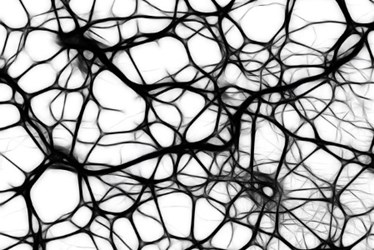Can Mechanical Force Influence Neuron Growth?
By Chuck Seegert, Ph.D.

Directed development of neural cell axons can be influenced by forces of fluid flow, a feature that was previously thought to be exclusively chemotactic. The new technique could be used by University of Texas at Arlington (UTA) researchers to create in vitro neuronal circuits.
Directing cellular growth in vitro has been the focus of biomedical research for greater than two decades. Using micropatterns and chemical cues, researchers have been able to control cell growth, dictating when and where it happens. Micropatterning culture substrates by using fabrication techniques taken from the computer industry has allowed a wide array of experiments to be performed. A conclusion of this extensive body of research is that mechanical forces applied to cells on the microscale are a primary cause of this directed growth.
Until now, however, the theory of mechanical influence has not extended to neuronal cell growth. This cell type has been influenced by chemical cues nearly exclusively but, in a recent press release, UTA researchers revealed that mechanical forces from fluid flow will indeed direct axonal growth.
“It is well known that fluid flow is involved in various processes during organ development. However, there was no evidence to confirm the influence of direct microfluidic flow on axonal migration,” said Samarendra Mohanty, leader of the Biophysics and Physiology Lab in the UTA College of Science, in the press release. “Through this line of work, our lab is discovering that it’s not only chemical cues, but physical cues such as force, heat and flow that need to be looked at or used for understanding and control of neuronal guidance both in the lab and in the body.”
Using fluid flow from a microtube, the growth of axons was redirected on a 90 degree angle from the original axis of extension, according to a study published by the team in Nature Scientific Reports. Axons are the long extensions that reach out from neuronal cells to form connections with other neurons. With the new culture method, the team thinks they can develop systems that will direct neural pathways for testing in vitro.
“After we determine thresholds for effective axonal guidance versus damage or detachment, we can fabricate microfluidic platforms that will enable complex flow patterns and schedules,” said Bryan Black, a researcher in Mohanty’s lab, in the press release. “This will teach us whether the process is reversible, among other things, and potentially allow us to produce simple neuronal circuits.
The mechanical direction of axons in neural cell culture may allow the formation of circuits of cells that can interact with each other. Another recent development in the field of optogenetics uses light to control and study neurons, a technique that may complement this area of research.
